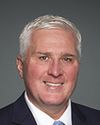Thank you, Mr. Chair.
Good afternoon, Mr. Chair, and committee members. Thank you for inviting me to appear before you as you begin your study of services to veterans in allied nations.
I think it is important to look at what other countries are doing to support their veterans in order to keep up with best practices. However, I also think it is imperative to develop Canadian solutions to address Canadian challenges and problems.
As you begin your study, I want to put forward three elements that I believe are important factors as you weigh the testimony you are going to hear from different countries. They are context, complex design, and outcomes.
Understanding context is important when looking at services provided by other countries to their veterans. If a country has a national health care system or a high cost of living, both aspects can greatly affect why a service is or is not being provided, and the particular dollar value of that service.
Let me give you an example of what happens when context is overlooked. In June 2009, this committee published a report that compared veterans services offered by member countries of the Commonwealth and G8. In that report, some cautionary statements were made to remind the reader that direct comparisons are not always possible. However, a significant portion of the report was dedicated to comparing veterans lump sum payments between Canada, Australia, and the U.K.
Because of the way the report was laid out, veterans and the media focused on the fact that at that time a U.K. veteran could access up to $1 million and the Canadian veteran only $267,000. Without the context of the social and economic environment and health care considerations within which those benefits were provided, the focus on the actual dollar value did not provide the meaningful insight we needed to improve things here in Canada.
Last year when we examined compensation for pain and suffering as part of our “Fair Compensation to Veterans and their Survivors for Pain and Suffering” report, we researched the programs offered by other countries. We looked at what other Canadians with similar work-related injuries would receive, and what the Canadian courts actually award. When we looked at other countries, we found the types of programs tended to be similar. For example, most provided some form of compensation for pain and suffering, but often the way in which the programs were delivered, and the level of support and eligibility criteria varied widely.
Although it is useful to learn from others when developing new programs, we have found that it is difficult to draw direct comparisons because each country designs and administers its programs differently to meet its own national needs, imperatives and economic realities.
Context also extends to how the benefit is implemented. In the U.S., there are three GI bills that provide education to veterans based on years of service. In 2016, I visited the U.S. Department of Veterans Affairs and received the same briefing that had been provided to Veterans Affairs Canada while it was designing the present education and training benefit.
One of the things I learned was that the U.S. Department of Veterans Affairs had not consulted its Department of Defense in the design of their GI bills, so there were issues of alignment between the departments. I also recognized that the Canadian Armed Forces has significantly longer training and shorter deployment cycles than the U.S. military, which could affect the outcome if a U.S. benefit was transferred to a Canadian context without consideration of an adaptation to those contextual differences.
On returning to Canada, I discussed these concerns with Veterans Affairs Canada. The good news is that the department engaged with the Canadian Armed Forces on the new education and training benefit, and structured the eligibility to take into account CAF training and deployment cycles, as well as supporting CAF retention initiatives.
While we are waiting for the final program details, understanding the context allowed Veterans Affairs Canada to create a Canadian solution to a Canadian problem.
The second point is complex design. We need to consider the design of our existing veterans benefits and support structures before we add another new benefit. What we have now is too complex to administer and to communicate effectively to veterans and their families. We need to simplify and streamline the system of benefits for veterans.
I have provided you with two diagrams to illustrate this point. The first diagram is not a process map, rather, it shows how all the CAF and veterans benefits integrate and how complex the system is. You can see the complexity. If I was to walk you through this diagram one benefit at a time, it would take the whole time allocated for this meeting. But if ever you or any of your staff need a detailed briefing on this particular diagram, I would be happy to provide it at your convenience.
As you know, budget 2017 announced a number of new benefits. What now needs to be done is to look at all the benefits from a strategic design perspective and determine whether or not everything is in place to provide veterans and their families with the supports they need, including easy access for eligible veterans. I have made a number of recommendations that would help, but above all, it is important that the overall design cover the basic elements that need to be in place to support all veterans.
The second diagram illustrates the key components of support to veterans. Not every veteran will access all of these components, but they should be available if needed. For example, if you are released with no medical issues or requirement for transitional support, only the areas in blue would apply. Benefits are wide-ranging and diverse, both in terms of their intent and design. They include financial benefits, such as military pension and support benefits. Others provide educational assistance or help in finding employment. They also include services and treatments that veterans require as a result of a medical condition related to their service. The challenge is how to simplify the current complex design, while ensuring we meet the needs of the veterans and their families.
Lastly, we have outcomes. When addressing veterans' issues, we need to identify the outcomes we are trying to achieve, and the benchmark we are going to use to measure success. In our 2016 “Fair Compensation for Veterans and their Survivors for Pain and Suffering” report, I recommended that the disability award maximum amount be aligned to that of the maximum amount awarded by the federal courts. The outcome that is being achieved is that veterans receive, as a minimum, no less than what other Canadians suffering a work-related injury would receive. The benchmark that is being used to measure success is that which is used by the Supreme Court of Canada.
I also recommended that additional compensation, due to the uniqueness of military service, be provided for exceptional suffering. In addition, I have recommended using an income replacement model for ensuring financial security, so that a veteran is provided with what they could have received had they had a full military career. If the salary and pension provided by the Canadian Armed Forces is seen as fair compensation, then ensuring that a veteran with a diminished earning capacity as a result of a service-related injury is topped up to the benchmark is the right thing to do.
Clear outcomes are necessary to define the end state. We need to ask ourselves, “Are we fairly compensating veterans for pain and suffering? Are we replacing their income as if they had had a full military career? Are we paying for all out-of-pocket expenses related to their disability?”
What is next?
In conclusion, it may be useful to examine the measures taken by other countries to simplify the process, eliminate the obstacles to accessing programs, and effectively communicate with veterans and their families in order to improve our Canadian system.
However, as I cautioned earlier, while it is worthwhile to learn from others when developing new programs, it is difficult to draw direct comparisons because each country designs and administers their programs differently to meet their own national needs, imperatives, and economic realities. Above all, we need to stay focused on finding Canadian solutions for Canadian problems, and we always need to consider context, complex design, and outcomes.
Thank you, Mr. Chair. I stand ready for your questions.




